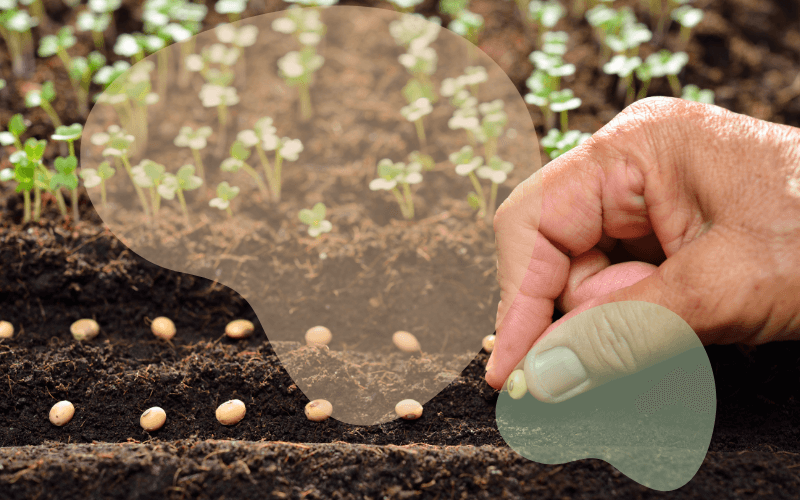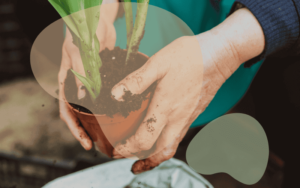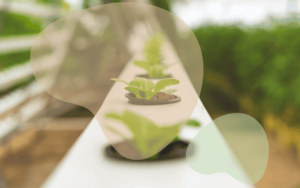Starting a garden can be both exciting and overwhelming, especially when faced with the question: seed starting vs. transplanting? Each method has its unique advantages and challenges, and understanding them is key to making an informed decision. This guide delves into the details of both approaches, offering insights on how to start seeds indoors, practical transplanting tips for beginner gardeners, and a comprehensive comparison to help you determine which method suits your needs.
Seed Starting Basics
Starting seeds indoors is a popular choice among gardeners who want full control over the growing process. It allows you to start your garden earlier, regardless of outdoor conditions and provides the satisfaction of nurturing plants from the very beginning.
- Extended Growing Season: Start seeds indoors weeks before the last frost, giving plants a head start.
- Diverse Plant Options: Seeds offer a wider variety than what’s available at nurseries, including rare and heirloom varieties.
- Cost Efficiency: A single packet of seeds can yield dozens of plants, making this an economical option.
- Custom Growing Conditions: You can tailor light, temperature, and moisture to optimize growth.
Challenges of Seed Starting
While rewarding, seed starting comes with its challenges:
- Learning Curve: Proper setup and maintenance require knowledge and practice.
- Space Requirements: Growing seedlings indoors can take up significant space.
- Timing Issues: Starting too early or late can affect plant health and readiness for transplanting.
How to Start Seeds Indoors
Here’s a step-by-step guide to help you succeed with indoor seed starting:
- Select the Right Seeds: Choose seeds suited to your climate and growing season. Vegetables like tomatoes, peppers, and basil are beginner-friendly.
- Prepare Your Setup:
- Containers: Use seed trays, egg cartons, or small pots with drainage holes.
- Seed Starting Mix: Avoid heavy garden soil; use a sterile, lightweight mix for better aeration and moisture retention.
- Plant the Seeds: Refer to seed packets for correct planting depth and spacing. Typically, seeds are sown twice as deep as their diameter.
- Provide Adequate Light:
- Place seedlings in a south-facing window or under grow lights.
- Position lights 2–4 inches above the plants and adjust as they grow.
- Control Temperature and Moisture:
- Maintain soil temperatures of 65–75°F for optimal germination.
- Cover trays with plastic domes to retain moisture and create a mini greenhouse effect.
- Monitor Growth:
- Thin seedlings by snipping weaker ones at the soil level to avoid overcrowding.
- Gradually increase air circulation to strengthen stems.
Common Seed-Starting Mistakes and How to Avoid Them
- Overwatering: Soggy soil leads to fungal diseases like damping-off. Water sparingly and ensure proper drainage.
- Inadequate Lighting: Seedlings become leggy without enough light. Supplement with grow lights if necessary.
- Poor Timing: Starting too early can lead to overgrown plants before outdoor conditions are suitable. Use a planting calendar for your region.
Tools for Successful Seed Starting
- Seed Trays: Durable trays with drainage holes prevent root rot.
- Grow Lights: Full-spectrum LED grow lights promote healthy growth.
- Heat Mats: Maintain consistent soil temperatures for faster germination.
Transplanting Basics
What is Transplanting?
Transplanting is the process of moving seedlings from their initial containers to larger pots or garden beds. This technique allows gardeners to nurture plants in controlled conditions before transferring them outdoors, where they can thrive.
Advantages of Transplanting
- Stronger Root Systems: Plants develop robust roots when grown in optimal conditions before being transplanted.
- Optimal Spacing: Transplanting allows gardeners to space plants appropriately, ensuring they receive enough sunlight, nutrients, and water.
- Weed Control: Transplants are better equipped to outcompete weeds compared to directly sown seeds.
Challenges of Transplanting
- Transplant Shock: Seedlings may experience stress when moved, affecting growth temporarily.
- Timing Sensitivity: Transplants must be introduced to outdoor conditions at the right time to prevent stunting.
- Extra Work: The process requires an additional step compared to direct sowing.
Transplanting Tips for Beginner Gardeners
- Choose the Right Timing:
- Transplant when seedlings have 2–3 sets of true leaves and the outdoor soil is warm enough for planting.
- For cool-season crops, transplant early in the spring. Warm-season crops like tomatoes should be moved after the last frost.
- Prepare Your Plants:
- Hardening Off: Acclimate seedlings to outdoor conditions by gradually exposing them to sunlight, wind, and temperature changes over 7–10 days.
- Water Well: Ensure plants are well-hydrated before transplanting to reduce stress.
- Prepare the Soil:
- Loosen soil and mix in compost or organic fertilizer to create a nutrient-rich base.
- Avoid compacted or poorly drained soil.
- Transplant Carefully:
- Handle seedlings by the leaves, not the stems, to avoid damage.
- Dig a hole slightly larger than the root ball and place the seedling at the same depth it grew indoors.
- Post-Transplant Care:
- Water immediately after planting to help roots establish.
- Mulch around plants to retain moisture and prevent weeds.
Common Transplanting Mistakes
- Skipping Hardening Off: Sudden exposure to outdoor conditions can cause transplant shock.
- Planting Too Deep or Shallow: Match the depth of the original container to avoid stressing the roots.
- Crowding Plants: Overcrowding leads to competition for resources, affecting growth and yield.
Seed Starting vs. Transplanting – Which is Better?
Both seed starting and transplanting have their place in a gardener’s toolkit, and choosing between them depends on your resources, time, and goals. Here’s a detailed comparison:
| Factor | Seed Starting | Transplanting |
| Cost | Lower (seeds are inexpensive). | Higher (nursery plants can be costly). |
| Variety | Offers a wider selection of plants. | Limited to what’s available in stores. |
| Time Commitment | Requires several weeks of preparation indoors. | Shorter, as plants are already partially grown. |
| Ease of Use | Involves a learning curve for beginners. | Easier but may involve transplant shock. |
| Control Over Growth | Full control over growing conditions. | Minimal control after purchasing plants. |
Seed Starting vs. Transplanting – Which Should You Choose?
- Seed Starting is Ideal If:
- You want to save money and have access to unique plant varieties.
- You enjoy the process of nurturing plants from the beginning.
- Transplanting is Ideal If:
- You prefer convenience and a faster route to a thriving garden.
- You lack time or indoor space for seed starting.
The decision between seed starting vs. transplanting boils down to your priorities as a gardener. Whether you enjoy the journey of nurturing plants from seeds or prefer the ease of starting with transplants, both methods can yield a productive and beautiful garden.If you are just starting out, try a mix of both techniques to see what works best for your space, climate, and schedule. By mastering the basics of how to start seeds indoors and following essential transplanting tips for beginner gardeners, you’ll set the stage for a rewarding gardening experience. 🌱




